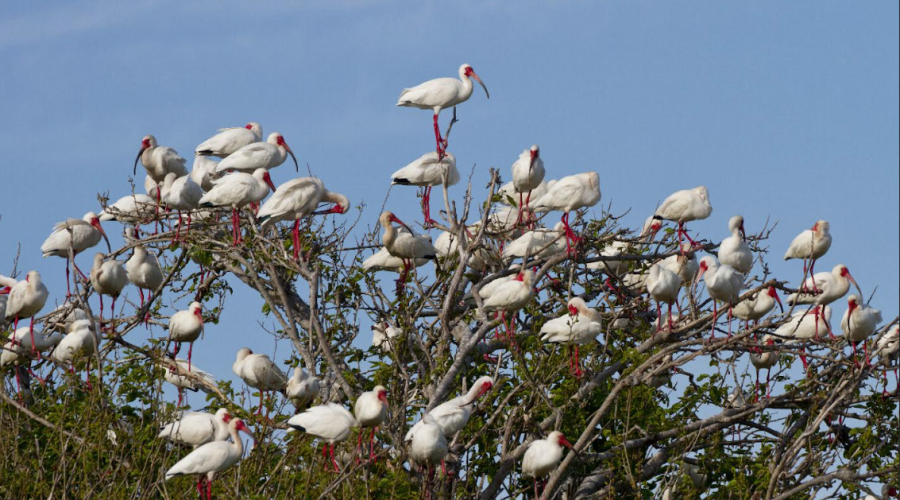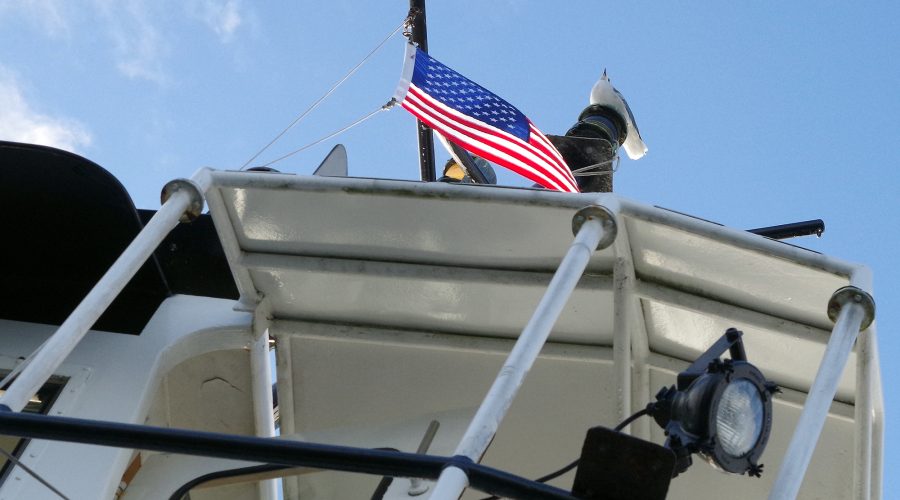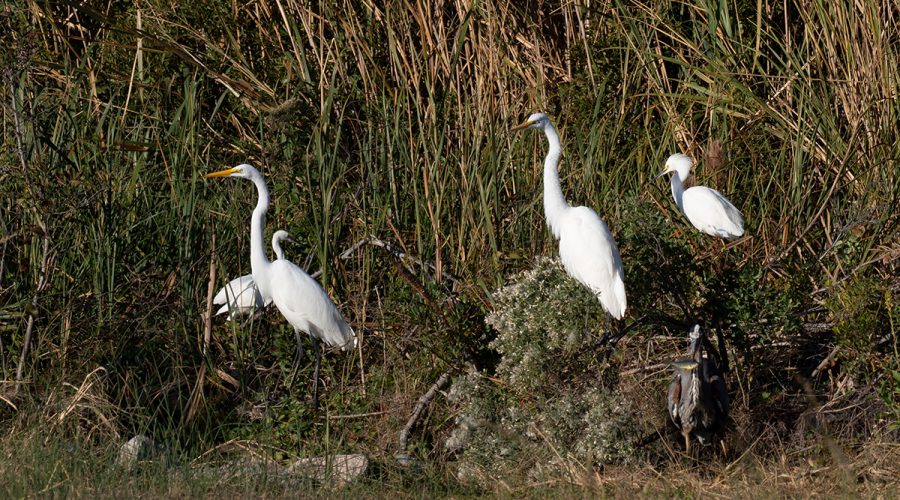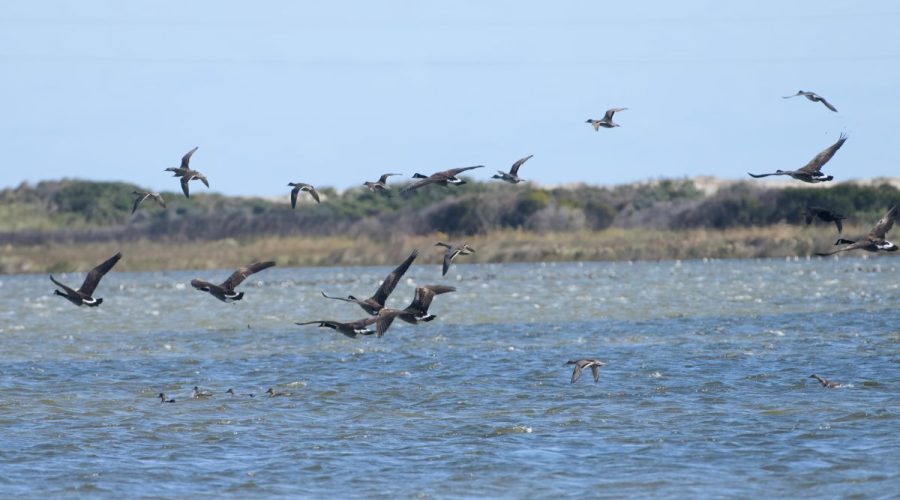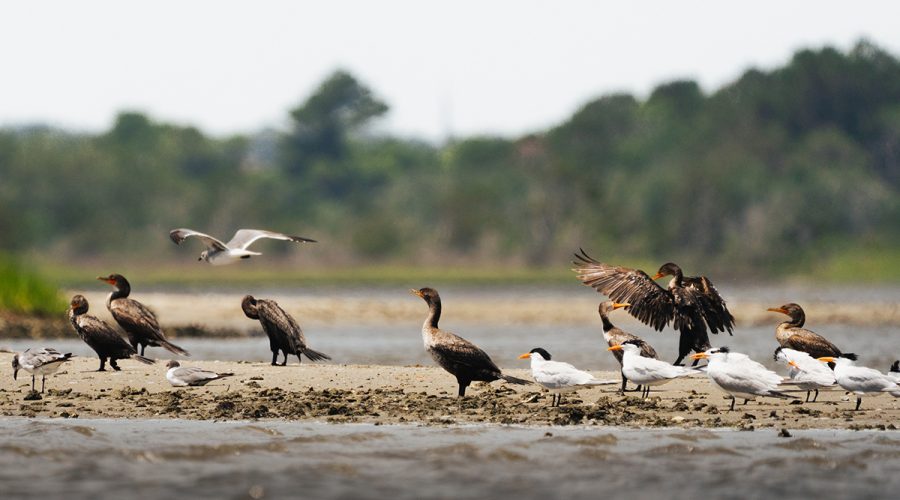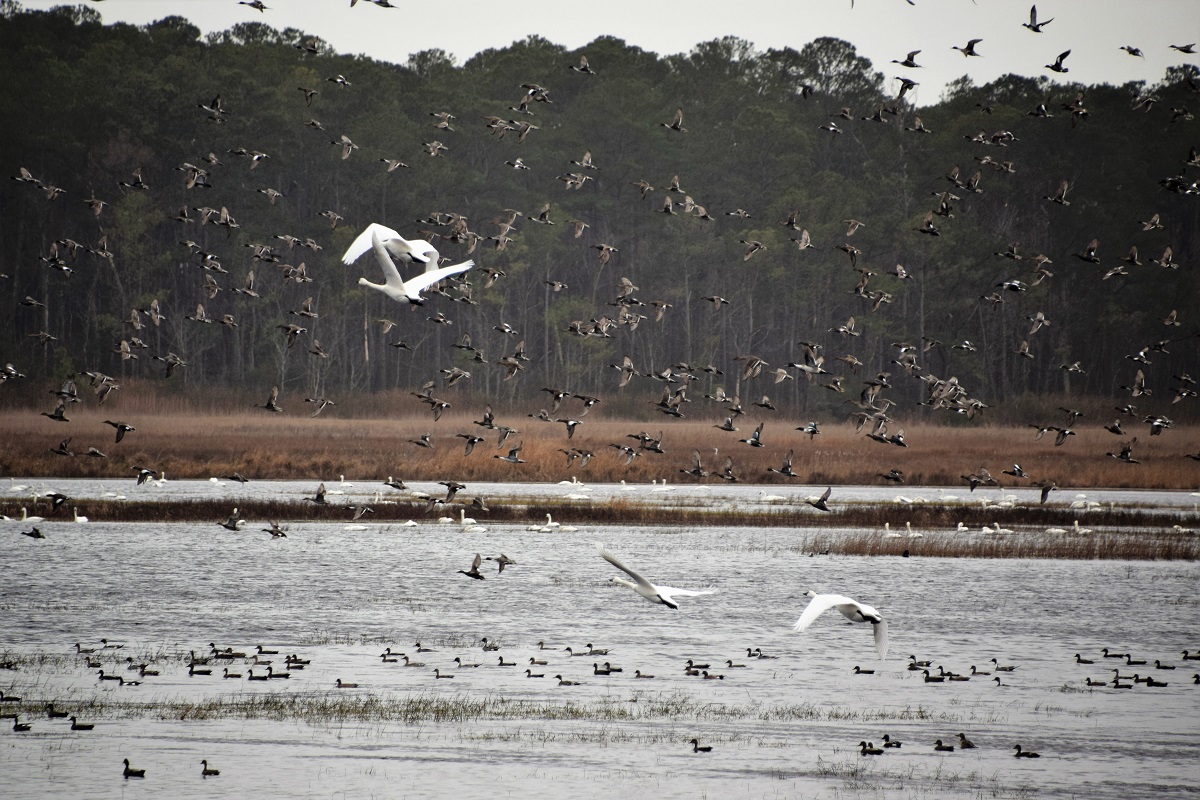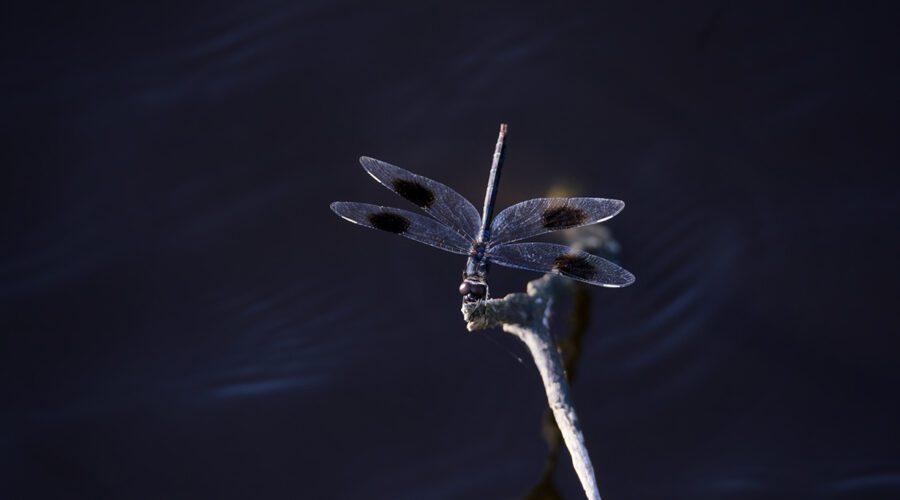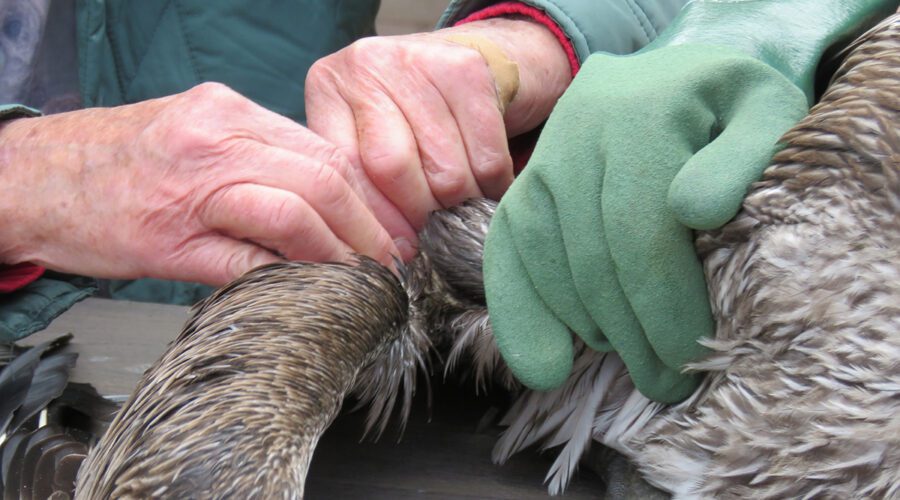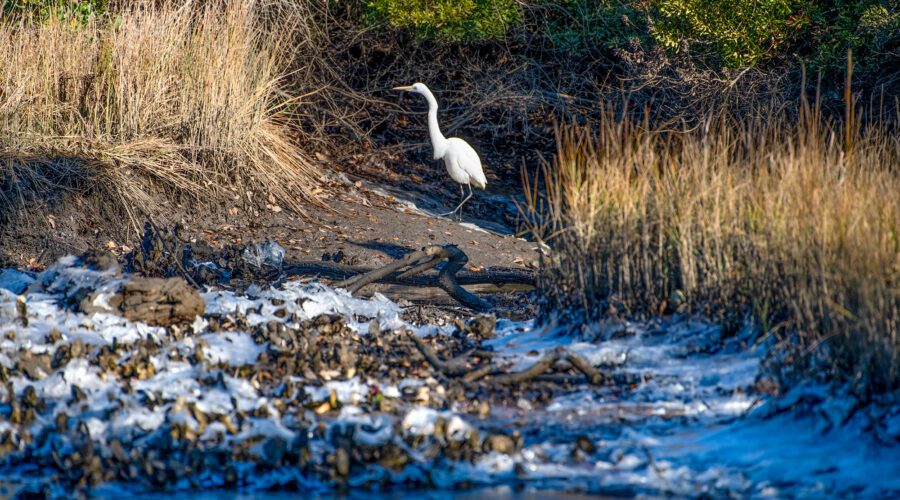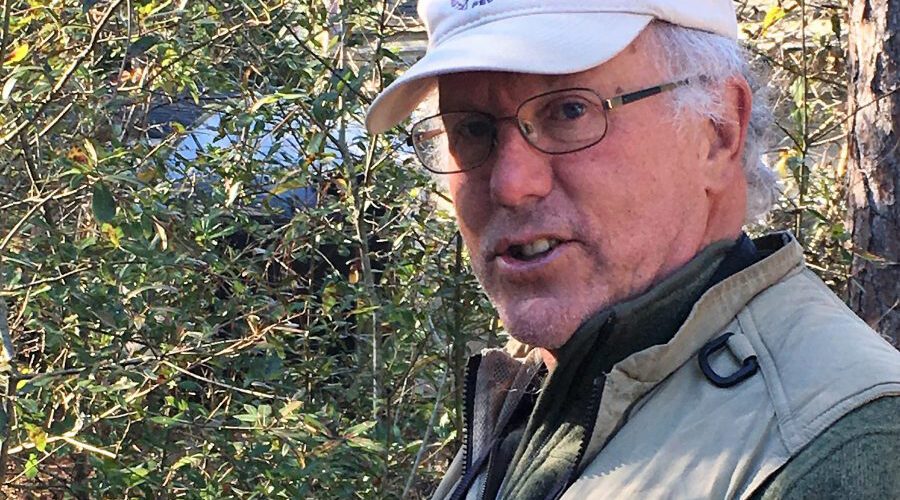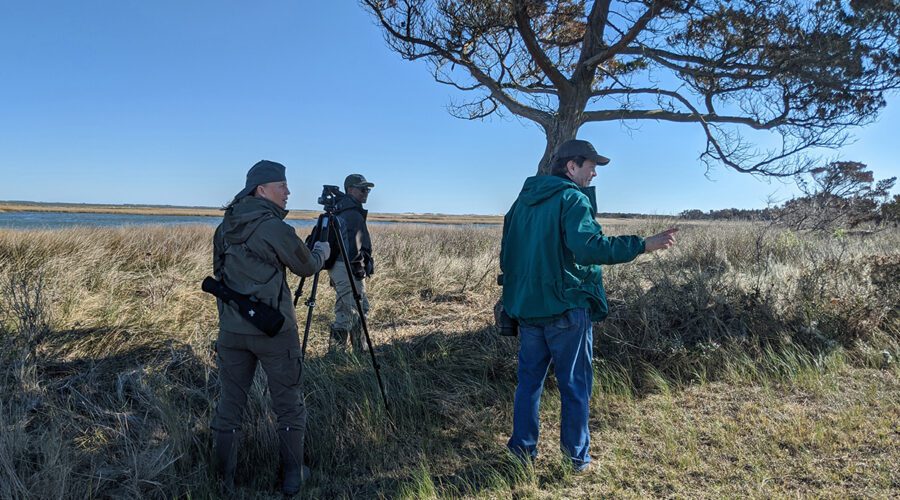The count dates this year will be Dec. 30 on Ocracoke Island and Dec. 31 on
Portsmouth Island.
birds
Partnership to test living shorelines on two Cape Fear islands
An effort to protect threatened wading bird colonies and their imperiled habitat on Battery and Shellbed islands, Audubon, Sandbar Oyster Co. and the North Carolina Coastal Federation have teamed up to design and install two pilot projects and test their effectiveness.
Crossing the Neuse River the easy way
A gull keeps watch from atop the North Carolina Department of Transportation Ferry Division’s vehicle ferry Kinnakeet as it plies the Neuse River between Minnesott Beach and Cherry Branch. Photo: Mark Hibbs
Shorebirds flock to restored pond at Pine Island sanctuary
Staff at the Donal C. O’Brien, Jr. Sanctuary and Audubon Center in Corolla are crediting a recently completed habitat-restoration project with luring birds and wildlife back to a previously problem-prone pond.
Tabb’s Trails: Along the North Pond Wildlife Trail
Saturday, Oct. 18, turned out to be a remarkable day on the half-mile trail behind Pea Island National Wildlife Refuge’s visitor center, with rarely seen species and migratory waterfowl.
Shift change
Danielle Carey of Holly Ridge recently submitted this image of various shorebirds congregating on a sand bank in the Sneads Ferry area as if time for a shift change. “This was my first time taking this lens out on the water, and I felt like it was the one day I wasn’t seeing any birds out” Carey told us in her submission. “On our way back, I spotted this little sandbar with a whole variety of birds. I was so excited, and although I aim to capture birds in flight, I loved that I was able to capture a moment where one was taking off, and another was landing at the same time.”
Judge blocks pilot Lake Mattamuskeet algaecide application
A federal court decision Wednesday blocks the U.S. Fish and Wildlife Service from using a potentially harmful algaecide at Mattamuskeet National Wildlife Refuge, a compound that environmental groups argued would endanger the waterfowl the refuge is supposed to protect.
Plan would address threatened eastern black rails’ habitat loss
A public comment period is open on a proposed management plan that seeks to rebuild the once-abundant birds’ numbers by permanently protecting coastal marshes and helping private landowners create habitat.
Wrong tern?
Least terns are excellent fish-catchers, and when feeding their young can deliver about two fish per hour. Males also catch and display fish during courting, which is what we assumed is going on here. There’s only one problem with that theory: After showing it to the female for a few seconds, when she finally showed interest, he flew away. Photo: William Birkemeier
Shorebirds among species in steepest decline in latest count
Audubon’s 2025 State of the Birds Report shows East Coast species such as least terns, American oystercatchers and piping plovers are diminished in numbers with shorebirds most heavily represented among those at a perilous tipping point.
Tabb’s Trails: Jockey’s Ridge State Park celebrates 50 years
The 426-acre state park in Nags Head is a harsh environment but rewards with self-guided trails taking hikers through dunes, foliage and by flowering plants swarmed by pollinators.
Sandy Run Park: Town trail an overlooked Outer Banks gem
Tabb’s Trails: In our new photo-essay series, coastal reporter, photographer and hiking enthusiast Kip Tabb takes you along, starting with this easy half-mile loop around a pond and marsh in Kitty Hawk.
Wildlife shelter posts reward to end maiming of pelicans
A wild bird rescue organization in Brunswick County is offering a $10,000 reward to stop the common winter occurrence of dead and severely injured brown pelicans washing ashore.
Icy conditions
An egret hunts along the shore of an icy marsh Thursday near Pelletier Creek in Morehead City. Don’t look for a quick thaw as much of coastal North Carolina is under a winter weather advisory from 4 p.m. Friday until 10 a.m. Saturday. The forecast calls for the potential for light accumulations of ice and snow, although little to none is expected from Hatteras Island to Ocracoke Island. Photo: Dylan Ray
Morehead City naturalist John Fussell leaves birding legacy
The conservationist who was steeped in bird and botany knowledge, credited for his focus on often-overlooked environmental issues affecting the North Carolina coast, and author of the region’s definitive bird guide, died last week at 75.
Best way to bid farewell 2024? Count birds on Outer Banks
Hardy birders, volunteers, aspiring community scientists, photographers and others will soon have their chance to count birds on Ocracoke and Portsmouth islands to improve understanding of bird life trends that have implications for all.


